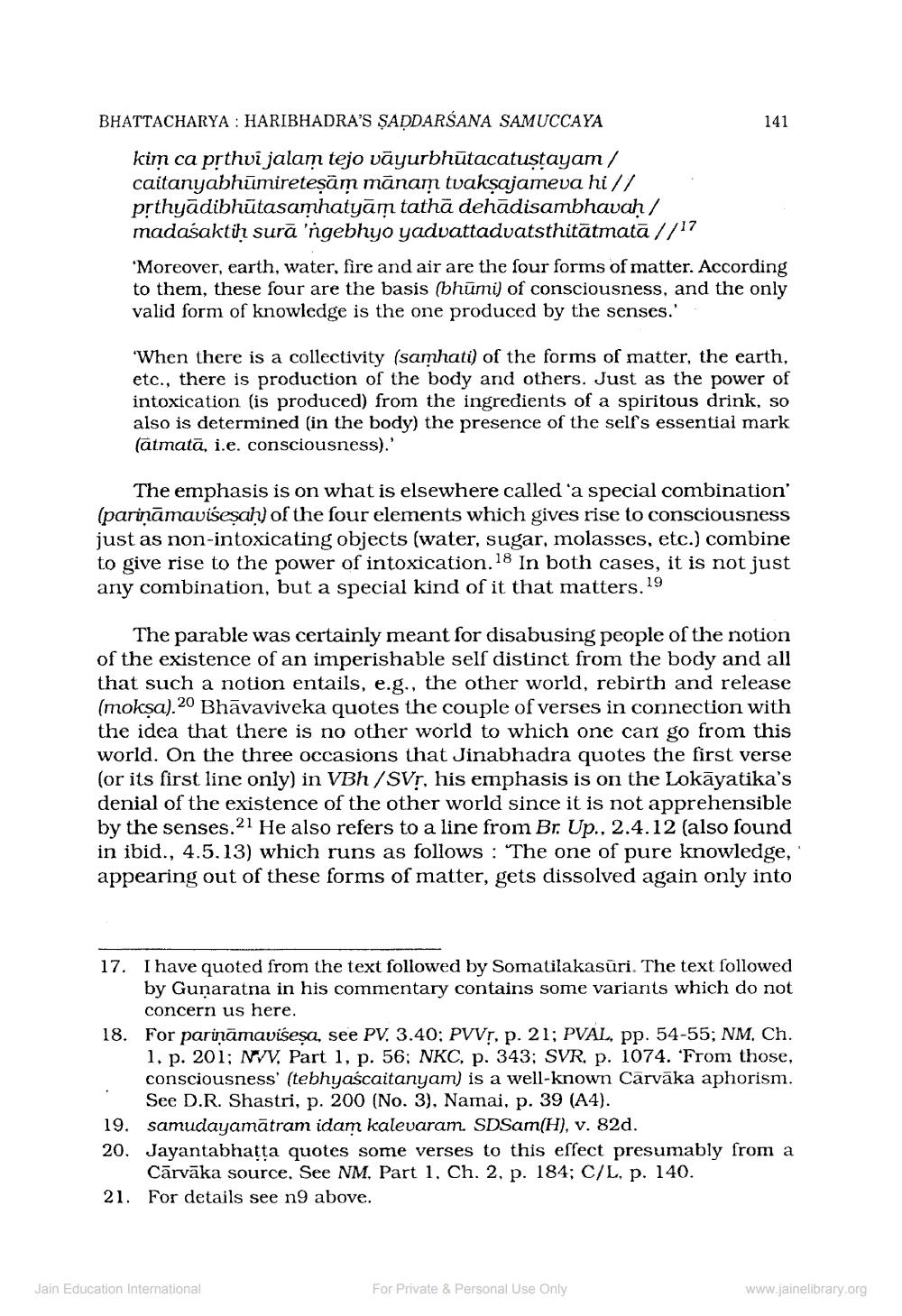________________
BHATTACHARYA : HARIBHADRA'S SADDARSANA SAMUCCAYA
141
kim ca prthvi jalam tejo vāyurbhūtacatustayam/ caitanyabhūmiretesām mānam tvaksajameva hi // prthyādibhūtasamhatyām tathā dehādisambhavah / madaśaktih surā 'ngebhyo yadvattaduatsthitātmatā //17
*Moreover, earth, water, fire and air are the four forms of matter. According to them, these four are the basis (bhūmi) of consciousness, and the only valid form of knowledge is the one produced by the senses.'
'When there is a collectivity (samhati) of the forms of matter, the earth, etc., there is production of the body and others. Just as the power of intoxication is produced) from the ingredients of a spiritous drink, so also is determined (in the body) the presence of the selfs essential mark (ätmatā, i.e. consciousness).'
The emphasis is on what is elsewhere called a special combination' (parināmavisesah) of the four elements which gives rise to consciousness just as non-intoxicating objects (water, sugar, molasses, etc.) combine to give rise to the power of intoxication. 18 In both cases, it is not just any combination, but a special kind of it that matters. 19
The parable was certainly meant for disabusing people of the notion of the existence of an imperishable self distinct from the body and all that such a notion entails, e.g., the other world, rebirth and release (moksa). 20 Bhāvaviveka quotes the couple of verses in connection with the idea that there is no other world to which one can go from this world. On the three occasions that Jinabhadra quotes the first verse (or its first line only) in VBh/SVr, his emphasis is on the Lokāyatika's denial of the existence of the other world since it is not apprehensible by the senses.21 He also refers to a line from Br. Up., 2.4.12 (also found in ibid., 4.5.13) which runs as follows : The one of pure knowledge, appearing out of these forms of matter, gets dissolved again only into
17. I have quoted from the text followed by Somatilakasuri. The text followed
by Gunaratna in his commentary contains some variants which do not
concern us here. 18. For parināmavisesa, see PV. 3.40: PVVI, p. 21; PVAL, pp. 54-55; NM. Ch.
1, p. 201; N/V, Part 1, p. 56; NKC, p. 343; SVR, p. 1074. 'From those, consciousness' (tebhyascaitanyam) is a well-known Carvāka aphorism.
See D.R. Shastri, p. 200 (No. 3), Narnai, p. 39 (A4). 19. samudayamatram idam kalevaram. SDSam(H), v. 82d. 20. Jayantabhatta quotes some verses to this effect presumably from a
Cārvāka source. See NM, Part 1, Ch. 2, p. 184; C/L, p. 140. 21. For details see n9 above.
Jain Education International
For Private & Personal Use Only
www.jainelibrary.org




